* (restored)
—-
—-One ordinary April morning in 1999, two teenagers, Eric Harris and Dylan Klebold, arrived at Columbine High School in Littleton, Colorado equipped with extravagant plans and a huge arsenal of weapons. After months of extensive preparation, they had come to enact what they styled ‘Judgement Day’; in blunter terms, they had come to massacre their peers. Some forty-six minutes later, the scene was a jumbled mess of bullets and bodies, prayers and tears. Those who had been shot were not selected with any specific rhyme or reason; the bloodshed was random and rapid. Twelve students and one teacher were dead. More than twenty others were injured. As for the shooters themselves, they soon followed their victims. Walking the empty hallways as the police arrived, drinking from cups in the deserted cafeteria, firing off rounds at walls and floors, the two boys lingered as the carnage settled around them – and then, at some point, took their own lives. Such a dreadful, dull disappearing act was perhaps an apt finale to such a horrific and prosaic crime. The whole thing was over within lunch hour.
—-Since the overwrought drama of the Columbine massacre, explanation after explanation has been offered on why school shootings happen, almost all of it reductive. While in recent times, these fits of fury have become fashionable, alongside the media interest, many of the questions remain. What first initiated my interest was not the melodramatic claims that these boys had been poisoned by their culture, or that they were just spiteful and senseless through and through, but rather, a little-known anomaly present in the massacre themselves: namely, the fact that they suddenly stopped shooting people. About 32 minutes after firing their first shot, Klebold and Harris abruptly gave up; though the classrooms were still packed with plenty of potential victims, a fact they must have been well aware of, the two instead roamed aimlessly, their momentum lost. Despite the grisly beginnings, the next and only people to die would be themselves. What can we make of this? No doubt some critics might see this as exquisite irony: just as well, they might say, that these boys so dissatisfied with their own lives – and what was wrong with their lives really? they lived in the lap of luxury – should find their final, fierce act so devoid of ultimate meaning. And yet surely these incomprehensible creatures [2], these psychos so full of fury, these empty vessels so cynical about the sanctity of life should have killed and killed until their opportunity ended? Why did they stop? There is something else here.
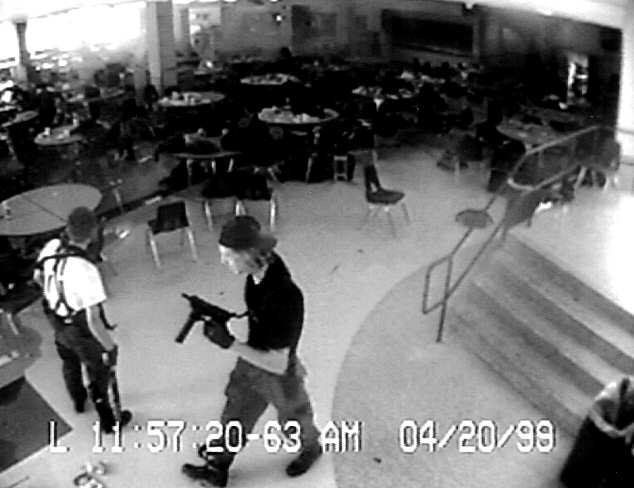
—-
School Shootings: A Schema
“Resistance to knowledge is part of knowledge.”
– Howard Stein [3]
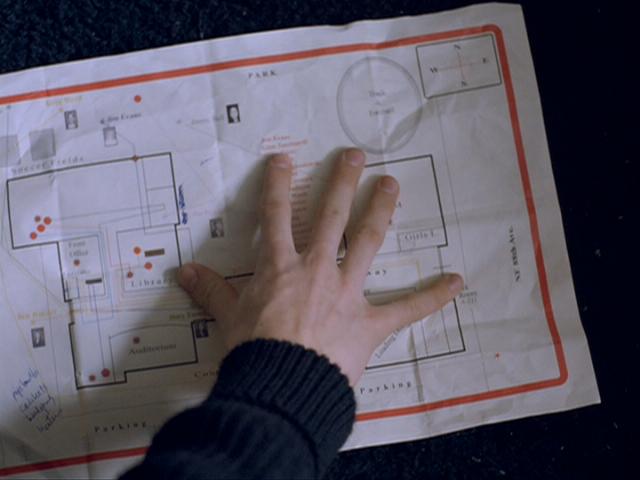
—-Before we look more closely at the crimes themselves, we should pause for a moment to work out just what a school shooting is. Now, that might seem rather redundant. Isn’t a school shooting self-evident? A kid comes in, maybe two of them, blasts the place apart, kills anyone in his way; his ‘way’ being whatever arbitrary track he decides to take across the school. Simple. Well, I’m not so sure. The press has taken to branding every violent incident involving a gun in a suburban school a ‘school shooting’, whether that incident involve teachers, students, partners, bullies or best friends. However, this conflation of all kinds of bullet-related violence overlooks the quite unique structural qualities to be found in school massacres. Indeed, the configuration of the crimes has much to tell us. Let me offer this broad framework, then, as the compass points for this post.
1) Crucially, the first – and perhaps most important – element that separate school shootings from other kinds of violence is the very lack of intention in them. In all cases, school shooters make a random selection of their victims. Kip Kinkel, for instance, killed both his parents the night before, but arriving at the school the next morning, any idea of targets fell away. He treated the students as fixtures, almost akin to infrastructure – personality didn’t factor. Likewise, Andrew Golden and Mitchell Johnson mounted a hill near their school in 1998 and opened fire on their peers as they streamed out of doors when the lunch bell rang. Even Klebold and Harris – for all their fierce promises of making all those ‘jocks’ they hated pay the price, their pretensions to a Biblical logic of ‘Judgement Day’ – went on to exclusively shoot people they hardly knew by name. In a curious performance of what cultural critic Mark Seltzer calls ‘stranger-intimacy’, the shooters kill the people they see at school everyday but people that they don’t closely know. [4] We can see then that what sets school shootings apart almost immediately is the structure of their unstructured motivation.
2) School shootings are aimed at students. Obvious enough, but it bears repeating. They are attacks on peers and not teachers. Teachers will die along the way – they did at Columbine for instance – but if they do, it is largely because they are there, not because they are the intended target. [5] This is not an assault on authority. In fact, what makes school shootings so baffling is that they are quite the opposite. Alienated as they are, school shooters do not rage against the adult world, but, instead, their social community. As theorist Julie Webber writes, “The student body represents their version of society, just as for workplace offenders their offices stand in for their abstract disappointment with society (even though these are adults, who should ‘know’ better.) This is a democratic problem: the targets are equals, not superiors”. [6] School shootings are, at heart, an egalitarian issue.
3) We’ve all heard it before. These crimes are senseless, purposeless, unfathomably so. And yet there seems no doubt to me that these attacks are meant to mean. As sociologist Katherine Newman has argued, although school massacres may be triggered by a diverse range of motives, what brings them together is the way they are enacted – as unexpected rampages on “a school-related public stage before an audience”. [7] Far from sudden snappages, the crimes are almost always planned, though in all instances they derail at the scene. Both points are important – the preparation and the disintegration. Indeed, even Kip Kinkel – who murdered his parents first, setting himself apart from most other school shooters – still felt the need to take violence to the school, to that setting, that audience. School shootings speak, and – aimed at random, and aimed at peers – they deliver a generalised message rather than a specialised address. They are – and will always be – small time states of the union.
—-By this definition, there have actually been very few school massacres. As best as I can figure, by these criteria, there have been about 16 cases recorded since 1996, which is rather rare in statistical terms. School shootings are not ubiquitous, though they are almost ritualistically regular. All these contradictory elements must be factored in if we are ever to make sense of them.
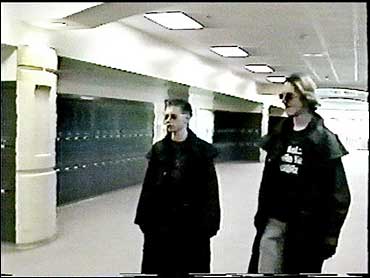
—-
Wayward Youth: A Sample
“…And I was no longer able to doubt that the lot and the infinite tumult of human life were open to those who could no longer exist as empty eye sockets, but as seers swept away by an overwhelming dream they could not own.”
— Georges Bataille [8]
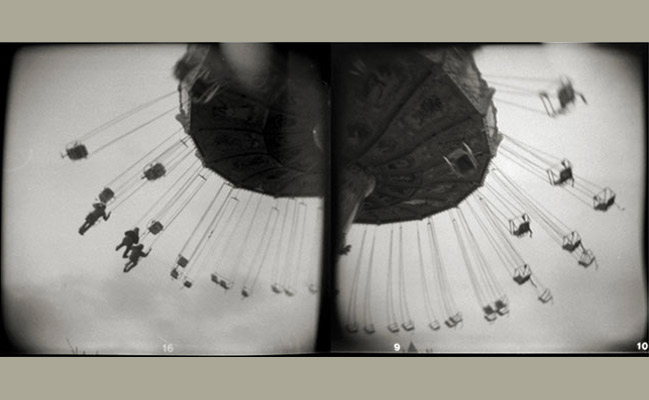

—-On the 2nd of February, 1996, Barry Loukaitis, 14, dressed as a wild west style gunslinger and used a duster to conceal a hunting rifle and two handguns. He was carrying almost 80 rounds of ammunition. Rather than taking the bus, he walked the distance between his house and the middle school.
—-Loukaitis opened fire on his algebra teacher as soon as he opened the door and hit her with one round in the chest. She died immediately, still holding an eraser in her hand. He then fired at students, killing two, one of them a bully to him. He also shot a girl in the arm.
—-Loukaitis took hostages for a short amount of time, but released the wounded. The hostage situation was stopped when teacher Jon Lane came into the room, assisted in the evacuation of injured students, then tackled Loukaitis, keeping him there until police arrived. Loukaitis is now serving two mandatory life terms without parole plus 205 years at Clallam Bay Corrections Center in Washington state.
Read more here.

—-“I am not insane, I am angry. I killed because people like me are mistreated every day. I did this to show society, push us and we will push back. … All throughout my life, I was ridiculed, always beaten, always hated. Can you, society, truly blame me for what I do? Yes, you will. … It was not a cry for attention, it was not a cry for help. It was a scream in sheer agony saying that if you can’t pry your eyes open, if I can’t do it through pacifism, if I can’t show you through the displaying of intelligence, then I will do it with a bullet.”
Read more here.
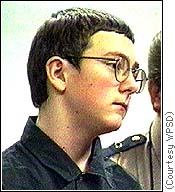
—-On the 1st of December, Carneal wrapped two shotguns and two rifles in a blanket and took them to school, passing them off as an art project he was working on. He also carried the loaded .22 pistol in his backpack. Carneal rode to school with his sister and arrived at approximately 7:45AM. When he arrived he inserted ear plugs and pulled the pistol out of his bag. He fired 8 rounds in quick succession at a youth prayer group. After seeing that he had fatally injured a friend of his (Nicole Hadley), he placed his pistol on the ground and surrendered to the school principal Bill Bond.
Read more here.


—-The two youths were among the youngest ever charged with murder in American history. The Jonesboro prosecutor later stated that were it not for their ages, he would have sought a death sentence for the pair. In August 1998, they were both sentenced to confinement until they reached the age of 21, the maximum sentence available under Arkansas law. They would have served until only 18 had federal authorities not added additional confinement for weapons charges. Judge Ralph Wilson commented “this is a case where the punishment will not fit the crime.” This case led to a wide public outcry for tougher sentencing laws pertaining to juvenile offenders. Since then, the laws regarding young offenders have changed in Arkansas. Had Johnson and Golden committed their crimes several years later, they could have both been charged as adults and imprisoned for life.
Read more here.
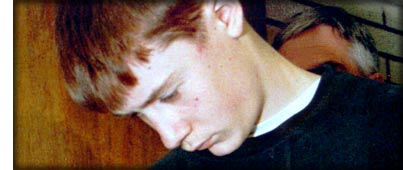
—-On May 21, Kinkel drove his mother’s Ford Explorer to his former high school. He wore a trenchcoat to hide the four weapons he carried, including:
* Hunting Knife (purchased for him by his father)
* 9mm Glock 19 pistol
* Ruger .22 Semi-Automatic Rifle
* Ruger .22 pistol
He left his mother’s car outside the school and carried a backpack filled with ammunition. He entered the hallway and fired two shots, one fatally wounding Ben Walker and the other wounding Ryan Atteberry. Kinkel then entered the cafeteria and, walking across the cafeteria, fired the remaining 48 rounds from the 50-round magazine in his rifle, wounding 24 students and killing one by the name of Mikeal Nicholauson.
—-When his rifle ran out of ammunition and Kinkel began to reload, wounded student Jake Ryker tackled Kinkel, who attempted to kill Ryker with the Glock. He only managed to fire one shot before Ryker knocked the gun out of his hand. More students, including Jake’s brother Josh, helped restrain Kinkel until the police arrived and arrested him.
—-Nicholauson died at the scene, and Walker died after being transported to the hospital and kept on life support until his parents arrived. The other students, including Jake Ryker (who was in critical condition) were also taken to the hospital with a variety of wounds.
—-At the high school, he fired a total of 51 rounds, 50 being .22 bullets from the rifle, and one from the 9mm Glock.
—-After leaving the library, the pair went into the science area and threw a small fire bomb into an empty storage closet. When the bomb exploded, they ran off. A teacher in the adjacent room put out the fire. They then proceeded towards the South Hallway, stopped, and began shooting into an empty science room (SCI-8) at the end of the hall. Next, they went down the staircase into the cafeteria where they were first caught by the security cameras. The recording shows Harris attempting to detonate one of the propane bombs, without success; he then took a sip from one of the drinks left behind by fleeing students. Another Molotov cocktail was thrown, but it too failed. The two then left the cafeteria and went back up the stairs. As they did so, the cocktail exploded (this can be seen in the security tapes) causing a fire that was extinguished by the fire sprinklers; they left the cafeteria at around 11:50 a.m. Once back on the upper level, they walked around the main North and South Hallways of the school without any direction, shooting aimlessly. They walked through the South Hallway, past the Social Studies section, and into the main office before proceeding back onto the North Hallway. Several times they looked through the small windows on the classroom doors and even made eye contact with students, but never attempted to enter the rooms. After leaving the main office, the pair went up to a bathroom entrance and began taunting students inside, saying such things as “we know you’re in there” and “let’s kill anyone we find in here”, but never actually entering the bathroom. At 11:55 a.m., the two returned to the cafeteria and entered the kitchen briefly, only to return back up the staircase, and into the South Hallway, at 11:58 a.m.
Read more here.
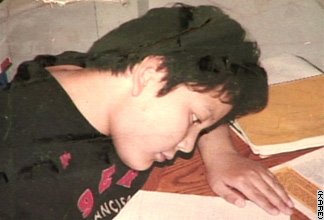
—-On March 21, 2005 Weise killed a total of nine people. He first killed his father and his father’s girlfriend and police force partner, 32-year old Michelle Sigana. Later he shot and killed seven people at Red Lake High School, including a teacher and a security guard. As many as 15 others were wounded in the school shooting. After briefly exchanging fire with police officers following the murders, Weise committed suicide. Two handguns and a shotgun and body armor that belonged to his grandfather were recovered at the scene and believed to have been used in the shootings.
Read more here.
—-
Unmanifest Anguish: Some Speculations on Contradiction, Expression, Entitlement and Belief
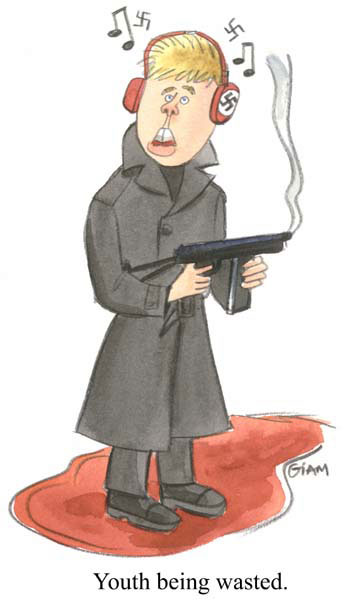
—-So, once again, what to make of all this? Each crime – tied together, yes, by key attributes – seems so dissimilar from the others. I don’t think I’m capable of offering ‘the’ answer to all of this. In fact, it is that search for one contained rationalization that has defined the poverty of media interpretations of these acts. From both the Right and the Left, cultural pundits have offered the public a dizzying array of explanations for the recent spate of school rampages. Some have gestured towards the ‘irresponsible’ accessibility of guns [9]; others toward the ‘nefarious’ influence of Goth subculture; still more have looked towards violent media, with a special focus on the graphic mayhem in videogames. Others still have insisted on mental illness as a motive, or have suggested that school shooters kill for fame, or because they were bullied or because they were subject to permissive or imperfect parenting. The list goes on in a spiral of accusation and recrimination.
—-In specific terms, very little has united this quite diverse range of conjecture as to why school massacres occur. Yet, in a broader sense, what all of these interpretations have had in common is a need to fix upon a single stable cause for school massacres, some discrete, knowable element in middle class culture which can be identified, excluded and expunged. As Julie Webber points out, the feverish efforts to blame cultural objects, conditions and groups have actually been an effort to delink the shootings “from societal processes and structures”, or to manufacture and lay blame on ‘an outside target into which [the public] could transfer its distress”. [10] In other words, the effort to blame guns, videogames and everything or group in between has been a tactic of deferment, an effort to rescue the mainstream from a more systematic implication by manufacturing scapegoats. For this reason, as literary critic Edward Ingebretsen suggests, the desire to ‘make sense’ of these public acts of violence, to ‘read’ them and ‘learn their lessons’, has actually been less pedagogical than ideological, a search for knowledge paradoxically designed “to shut down sense, even as the words themselves continue in a torrent”. [11] Awash in a wave of pop sociology, the debate around school shootings has been reduced to a set of cardboard cut-out answers, a selection of usual suspects custom-made to take attention off more unsettling reasons for these crimes.
—-
Fantastic Necessity
“Ideology, we may presume, arises precisely in the breach between the request for legitimacy emanating from a system of authority and our response in terms of belief.” — Paul Ricoeur [12]

—-For school shootings to happen, they must first be imagined. Most experts like to talk about ‘planning’ when it comes to school massacres. These kids, they argue, must be held accountable as adults because they plotted their attacks in advance – as if the lead-up to these crimes had the rock-hard certainty of a espionage operation, the intentions clear, the strategy exact, the preparation cold and calculated. Thus, the logic of Judge Wilson in the Jonesboro shooting: “This is a case where the punishment will not fit the crime”.
—-I do not like this idea of planning. Take the footage from the Columbine tapes, for instance. Before the camera, in the days before their massacre, Klebold and Harris riff about what tremendous damage they’ll inflict, crowing “It’s going to be like fucking Doom!” and ”We’re going to kick start a revolution”. However, their manner is not practical; it is whimsical. This is not some careful catalogue of an impending atrocity but a dreary, inverse example of what Joan Didion calls ‘magical thinking’. Throwing his hands up at one point, Harris cries, “More rage! More rage! Keep building it on”, then adds a bit later “Isn’t it fun to get the respect we’re going to deserve?”. The dramatic relish is obvious, and it belies the grave intent. The tapes, I want to suggest, are not so much documentary as dream diary. Rather than the product of premeditation, these crimes stem from storytelling, because over and above all, school shootings are fantasies – fantasies of closure, of resolution, of vindication, of relief.
—-Before he entered Heath High in 1997 and shot 8 people, Michael Carneal wrote this to himself: ‘This is the only adventure I’ve ever had’. The school shooting then would be an exploit, a small boy setting off into the Sahara. The plan for violence here is framed fantastically. And yet, as we read on, we find this is not only an adventure for Carneal, it is also a need: as he writes, “I have to do this for myself”. So, desire and demand, reverie and requirement: the school shooting is the product of both. Violence becomes a necessary fantasy, the ground zero of compulsion and choice.
—-But why? What brings these kids to this place where murder is the best and only option? To begin to think this through, we need to think in terms of contradiction. In the trial against Michael Carneal, the prosecution made much about the boy’s perverse psychology. Let me turn to Katherine Newman’s rather moralising account to shed some light:
Had anyone looked at the contents of the hard drive on Michael’s computer – often compiled late at night in the family living room, where he slept – they would have gotten a glimpse of the angry, violent impulses brewing beneath his awkward exterior. One piece on the computer describes the torture and degradation inflicted on the Smurf cartoon characters by an evil mastermind. The ten-page story depicts the innocent cartoon characters being shot, burned, microwaved, and driven into a sexual frenzy until they violate their own kind. Michael downloaded from the Internet instructional material on the ‘Raping of a Dead Corpse’ and the many ways that innocent visitors can die in Disneyland. [14]
Carneal, it seems, was quite the troubled young man, And yet the evidence accrued here – and in the trial also – is rather glibly read. The smurfs, the sexualised corpse, the deaths in Disneyland: if these are signs of ‘angry, violent impulses’ at work under the surface, they are not just at work in Michael’s mind, but under the ‘awkward exterior’ of culture itself. In a sense, far from indulging himself in a sort of sick pornography, one might see Michael as merely conducting research; his subject matter — cultural contradiction.
—-To be sure, this is hardly a practice exclusive to him alone; it turns up time and again in all the school shooting cases I have read. In each and every one, the shooters document hypocrisies, rail against the promises of a culture that fails to equate with their experience of it. Says Kip Kinkel, for instance: “Love at first sight is only in movies. Where the people in the movies are better than you. That is why you go to a pone [pawn] shop and buy an AK-15 because you are going to execute every last mother fucking one of you. If I had a heart it would be gray.” And indeed, in this blunt social perceptiveness, can we say he or any of the other school shooters are really wrong? For me, Carneal’s fascination with the ‘innocent’ deaths in Disneyland, and Kinkel’s diatribe on love, must be considered not as perverse or delusional but instead, as a legitimate fretful unease, a valid (and somewhat unextraordinary) anxiety over the gap between ideology and fact. Whether it be at home, at school, or in the culture itself, America abounds in fairytale places which promise everything and deliver nothing. Carneal’s Smurf story or the manual on necrophilia are not really signs of aberrance. In a way, they are just plain realism.
—-Now, I’m not trying to suggest Carneal – or any of the other shooters for that matter – were not psychologically unstable. Given the outcome, clearly they were. Rather, what I am proposing is that their mental disintegration was not due to a dissociation from reality – as so many argue – but instead an ever-deepening recognition of it, a verging ever closer to the nauseating Real. If there is a problem for school shooters, it is a problem of proximity. Take Carneal again. As Jean Baudrillard reminds us, Disneyland is less a theme park than an alibi, a ‘deterrence mechanism’ that in its supposed imaginariness seeks to convince us the world we live in is real, responsible and rational. As he writes: “This world [Disneyland] wants to be childish in order to make us believe that the adults are elsewhere, in the ‘real’ world, and to conceal the fact that true childishness is everywhere”. [15] In a symbolic sense, to see death in Disneyland is to close that gap, to peal back the alibi and behold the arrangement we call ‘society’ for the incoherent absurdity it is.
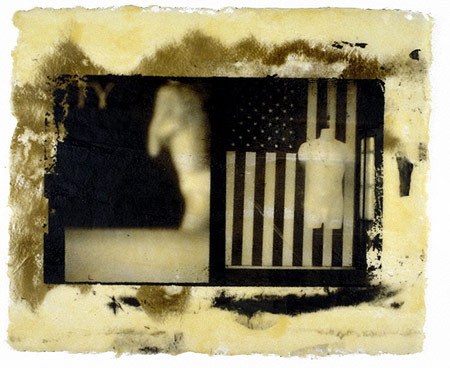
—-The logic of this is not only cultural; it is personal. After all, each of us has our own Disneyland in our head, our own imaginary deterrence mechanisms. So what of the psychology then, the individual element? Let’s take a look. In a journal entry written shortly before his school shooting, Carneal offers us this short biographical narrative:
—-They ALL mocked and slaughtered my self esteem it got so bad i turned to drugs sad to say but yes. after a crummy day at school when someone put into the school newspaper that i was gay. i went home and cried yes I admit it i cried. I sat and thought about everything that had happened that day the day before that. So I snorted 7 Tylenol 3’s made me puke a lot and faint.
So as the preachings of my friend against drugs I got off drugs. And I live hapily ever after. not.
I still am emotional about this subject but I have been clean for a year now.
As it happens, this entry is a mix of fact and fiction – Carneal never did drugs but he did get teased, and he was written up as gay in the school newspaper. Because of this, the drug story can’t be taken as its word but neither should it be dismissed. In truth, like the shooting itself, I feel its purpose is to act as a kind of act of ambiguous fictional self-fashioning. What Carneal hopes for here in this fake tale of kicking the habit is actually a different kind of detox, rehabilitation not from some phantom addiction but from the mental denigration that ‘led’ him to it in the first place. And yet as the ‘hapily ever after, not’ line suggests, his fantasy cannot escape the fact it is a fantasy. In a sense, what we are seeing in this entry is the Disneyland contradiction writ small: in Carneal’s mind, the idea of what he wants to be always returns to the reality of what he feels he actually is – a failure, an outcast, a faggot, a fuck up. Thus, to see himself for what he is becomes inseparable from seeing himself for what he isn’t. Affirmation of the self, in these circumstances, acts as a kind of perverse negation, a constant confirmation of lack, of what you are not and will never be. It is an assertion of emptiness. Consequently, even on the personal level, the play between reality and fantasy reaches a critical contradictory mass. And the school shooting – as another sort of fantasy, a compensatory one, a necessary one – becomes a way to fill the gap. This too is a theme not specific to Carneal but common across the range of school shooters.
—-To sum up, then, I feel that school shooters do what they do in an effort to square the botched equation between what sociologist Erving Goffman calls their “soiled identity” and the fucked reality that frames it. [16] And what is at stake for them is something so banal and profound it resonates with us all: these kids turn to violence in a frantic attempt to simply situate themselves, to identify and be identified for better or worse, to gain some kind of gravity. As a witness at Heath High said about Michael’s face as he opened fire on his classmates, “It was just blank, nothingness. It was like there was nothing to him.” Faced with breakdown on both sides, from without and within, it is precisely this nothingness that school shooters so desperately aim to escape.
—-
The Inarticulate
“The circle, uncurled along a straight line rigorously prolonged, reforms a circle eternally bereft of a centre.”
— Maurice Blanchot [17]
“Death is a displaced name for a linguistic predicament.”
— Paul de Man [18]
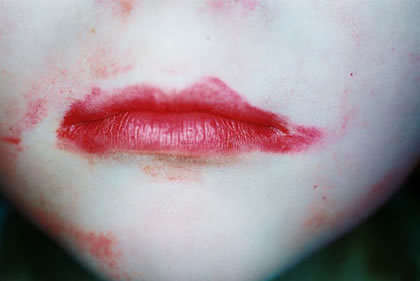
—-For all of this, though, some major questions remain: namely, why do school shooters turn their frustration upon the school? And why do they kill at random? Surely if an awareness of social contradiction were the only motivator here, school shooters would target authorities – parents, teachers, politicians, the powers above – not their teenage equals. Similarly, if it is the psychological contradiction that troubles them, the soiled sense of self, wouldn’t a more obvious answer simply be to commit suicide? Of course, some shooters do exercise both these options. Luke Woodham, Kip Kinkel and Jeff Weise would all murder their parents prior to their school shooting. Harris and Klebold and Weise would all commit suicide after. And yet what remains constant in this is the fact these acts are somewhat secondary, precursors and afterthoughts, to the ‘real’ action, the showdown at the school. What can explain this common compulsion that makes them kill their peers?
—-In some ways, this might seem like an artificial question. We all know authority, for instance, is not restricted to adults, but operates among students as well, in social hierarchies, for instance, which are integral to school settings. Because of this, is it even correct to talk of students as peers or rather as something like stratified members of hostile social castes? In a very brilliant and convincing book, sociologist Murray Milner has argued that adolescent association in schools is actually akin to Indian caste structures – where one finds a series of status groups which segregate contact, demand uniformity to norms and perform elaborate rituals to mark social boundaries and prohibit cross-group mobility. [19] So, in that vein, is the school shooting a type of levelling, then, a kind of microcosmic class action? I don’t think so. Perhaps in the dreaming stage, the shooters have some ideal of getting even, tearing down the hierarchies and setting the stage for some brave new world: “We’re going to kick start a revolution”. But when it comes down to it, on the day, school shooters do not discriminate. Even where they have bothered to make a list of intended targets, they rarely stick to it. In fact, most often, they hardly even accidentally kill the people they had planned to. Klebold and Harris, for instance, laughed loudly in their tapes that all their enemies were soon to get their well-deserved comeuppance, but in practice, they never went near them; the majority of the kids they murdered were whoever they found in the library. This arbitrariness is a principle that applies across the crimes. School shootings are not straightforward interventions against student social hierarchy.
—-So, what are they then? It seems to me that school shooters attack the school – and attack the students randomly, as symptoms of the school – because theirs is a more abstract outrage at the idea of the school itself. From the Senate to the suburbs, the school in American society is bought and sold as the basic democratic space, classroom of the civic, pedagogical, constructive, above all nurturing, where one can find the resources not only to narrowly prepare for a career but to develop ‘human skills’ that will aid in negotiating society. I think here of all the empty rhetoric about ‘no child left behind’ and of Bush’s recent remark after Cho went wild: “Schools should be places of safety, sanctuary and learning.” As most of us probably know, though, school in truth is nothing like these platitudes, neither in model or practice. Far from some sentimentalised space of equal exchange, transparent relations and universal self enhancement, schools are coterminous with the society that surrounds them — characterised by confusion, alienation, secrecy and mixed experiences. And so, given this, for the school shooter, a vertical rage about broader social and existential contradictions becomes a horizontal one, centred on peers.
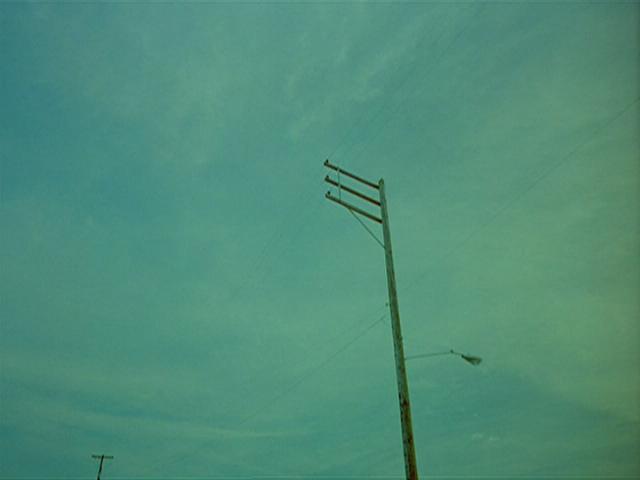
—-School shootings are lamented, of course, far more than they are prevented. Before the fact, the perpetrators are ‘dysfunctional’, but still considered a student among others; after the fact, they are separated — monsters, murderers, objects of our forensic interest. By adults, their difference is thought retroactively. In trying to work out why the build-up to these massacres is seldom noticed in time, Katherine Newman argues that school shooters often pass under the radar of their schoolmates, teachers and parents because of “structural secrecy”. [20] In her view, the way that high school systems organise their internal hierarchy and division of labour creates a separation of knowledge, a cognitive dissonance that clouds clear identification of troubled teenagers. With kids distrustful of authorities and unwilling to report unusual behaviour, with different teachers atomised in different faculties, with irregular parent-teacher contact, with the obfuscation of the ‘clean slate’ provided by counsellor confidentiality, Newman agonises that warning signs have become buried in an ongoing process of mixed signals and information loss. Her recommendation, then: an ever-more panoptical school. And yet, structural secrecy, mixed signals, information loss: why are these merely the reasons we overlook school shootings, rather than the reasons why they happen in the first place, a diagnostic rather than a constitutive concern? Think for a moment of Larry in Dennis’ My Loose Thread. For him, life is a series of relationships riddled with uncertainty, anxiety, lack of intimacy, secrecy and miscommunication. His ardent desire to connect with others comes up continually against his incapacity to fix anyone to steady, obvious emotional co-ordinates. So he says of his brother, Jim, and schoolfriend, Rand, at one point: “I still don’t know what either one of them secretly felt about me or each other. That’s ultimately what killed me, I think”. [21] If schools are meant to teach us skills for negotiating society, they actually expose some of us to the impossibility of negotiation, the ubiquity of society’s subterfuges. In a note to himself, Kip Kinkel wrote: “I feel like everyone is against me, but no one ever makes fun of me, mainly because they think I am a psycho.” Although this may seem like paranoia, and probably partially is, read beyond the surface to what he is implying here about missing information, his understanding that there are assumptions about him at work in the school, which effectively exclude him, and yet which never come into the open, categorically name him. Think too of the opening scene in Gus Van Sant’s Elephant, where over the image of a telegraph pole, we hear a babble of voices, audible but never quite articulated. This is the soundtrack of the school: a shared space where all is ambiguous, where – for some kids – their place is always under scrutiny, but never in a way that can be transparently understood. As Michael Carneal writes with his usual unwitting eloquence: “I think I’m an alien but I’m not sure”. Perhaps it is not so strange then that school shooters kill at random. After all, bullying, teasing – outright harassment – is only a small part of their problem. Theirs is an unanchored angst.

—-There is more to this, however. Killing at random is a depersonalised affair; it is, as I remarked before, to turn victims into infrastructure. Because of this, what I would like to suggest is that the attack on students as an abstract body is an outcome of the murderers’ felt lack of adequate representation within that body – a key grievance at the heart of school shootings. For the school shooter, a large part of their frustration stems from the fact that they feel the school – their primary social environment – allows them no voice. It promotes self-expression as its raison d’etré and instead delivers reductionism, no language capable of coming to terms with the world as it realistically is, only a shorthand speech that repeats the world the way it is fancifully imagined. To understand why this voicelessness becomes so unbearable for school shooters, however, we need to go back in time. Now, historically, scholars tend to trace the invention of the school back to ancient Athens and to Plato’s akademeia, one of the first philosophical institutions in Western history to formally train students in logic, rhetoric, mathematics, civics and metaphysics. And yet in doing this, these writers privilege a certain aspect of the modern school – the classroom – over others – the cafeteria, the hallways, the library, the playground. These seemingly side elements of the school are highly important. To be perfectly frank, the classroom means little to most students, apart from being the reason they have to show up at school everyday; instead, it is the semi-autonomous spaces around the classroom that make the difference, that matter the most to them. A more appropriate origin for our purposes, then, I think, would be the idea of the agora – the common public space – which was designed as an arena for expression and exchange. The agora was a marketplace and a forum, a place to sell wares and to socialise, in both cases to act out citizenship. Here, the enfranchised could assemble and associate, promote their produce, have their voices heard; democracy was enacted in an enclosed visual field where the people could capitalise, communicate and be recognised. Nowadays, our schools also aim to create a sense of citizenship – as the politicians always tell us – through expression and exchange, but this citizenship is mediated through the big product marketed in the new agora, namely, the commodity of being ‘cool’.
—-We should not underestimate cool, and its effects. It is much more than a peer attribution, a mark of respect; it is an ontology, a way of being. Coolness, Murray Milner argues, is so crucial in teenage life because it is a kind of resistive “other-worldliness”, “a means of seeking power through being indifferent to the usual worldly sanctions”. The idea of cool itself first emerged amongst black musicians in the early jazz movement, and this should not surprise us. In a context where open insubordination was met with fierce reaction, cool offered empowerment and integrity to black artists, not through aggressive defiance but through assuming an uninterested air of indifference, as if white rules couldn’t touch them. Equipped as they are with little social or political power, cool is a similar kind of compensation for teenagers, Milner insists, a type of tactical rebellion that calls for “the cultivation of an alternative lifestyle” in an effort to oppose “what is valued in the existing dominant culture”. [22] Cool looks to reject the rules and regulations of the adult world, to enact a social system separate from the authority of elders. Now, I think this is a plausible explanation for why coolness might appeal to kids – and why, in a teenage lexicon that changes its terms weekly, the word ‘cool’ itself has never faded – but it neglects one obvious point. In modern America, the language of coolness is hardly oppositional, nor separate from the ‘worldly sanctions’ it supposedly stands against. Instead, in its insistence on cynicism and apathy, and its dependence on consumer products (the right music, the right clothes, the right look), it has just become a local repetition of a larger social logic. Indeed, all across America, coolness is the very essence of cultural capital – it is the guiding logic behind consumerism – buying to separate yourself through style – and an aspiration for all. Indeed, all across America, coolness is the very essence of cultural capital – it is the guiding logic behind consumerism – buying to separate yourself through style – and an aspiration for all. It penetrates politics – the idea of ‘political spin’’, an attempt by politicians to package complex and often incoherent policies into simple slogans, cool sentences, ideology you can wear like a badge – as well as society. Indeed, in your daily newspaper column, think of the terms ‘trailer trash’, ‘ghetto’, ‘latte-set’, ‘gun-nut’, ‘neo-con’, ‘God warrior’ – all these and more gain their significance by the relative amount of cool assigned to them by the person who uses them. And out of all this, we can see that coolness empowers adults, just like teenagers, to evaluate one another, to find purpose and definition through exclusion. But at its worst, in the small context of the school, to be ‘uncool’ is a devastating blight in teenage life, a sweeping judgement on your unmarketable status. It is also a consensus that seems to arise osmotically and out of nowhere, delivered down by the entire student body, from no one source in particular – another reason, perhaps, for the randomness in school shootings. Importantly, in ancient Athens, we must remember that the agora also served another function: it was the place where the practice of ostrakism took place, a ritual exercise where all citizens would gather together to vote certain leaders into exile who were considered dangerous to the state – in what Carl Roebuck significantly calls, “an unpopularity contest”. [23] The focus has shifted – it is definitely not the leaders that are ‘voted out’ of the school-agora now, or society at large – but the principle is essentially the same. Coolness is an economy which downsizes and a democracy which outcasts.
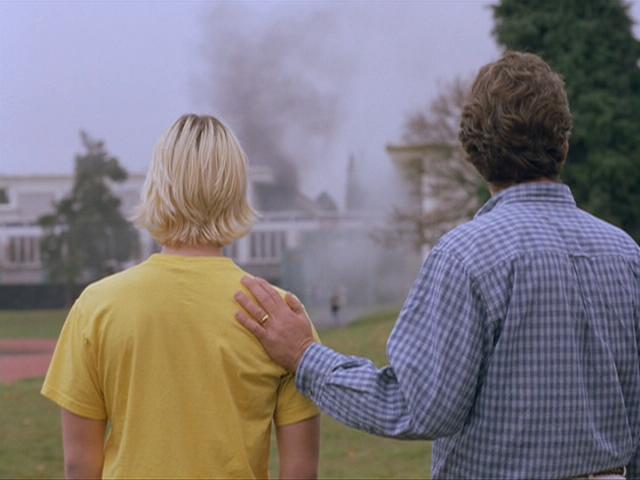
—-According to Wikipedia, in modern parlance, the word agora has also come to mean a crossroads, and if it’s true, this is a telling, resonant coincidence. School shooters cannot articulate themselves in terms of ‘cool’, for whatever reason, and so cannot be citizens. Not all kids care about being cool, of course, and, in fact, some manage to escape into oppositional styles, a kind of counter-cool – personas like Goth, or punk or stoner, to rehearse some worn examples. But like the counter-culture itself, which as we all know has been effectively incorporated into the society it sought to oppose, one does not escape ‘cool’ by posing oneself against it; in doing that, one simply ends up repeating its terms. It’s a spiralling, imprisoning affair. And for school shooters, the emptiness of all this becomes unbearably transparent, although the seductiveness never fades. At his trial, an employee of the county jail recalled that Mitchell Johnson would not stop putting on the ‘cool’ act: “He tried to talk gang. He tried to flash gang signs. He would take his comb and try to carve gang signs on the paint, on the door, on the bunk, on the table…” Note here, the word ‘tried’. Johnson’s efforts to insulate himself from the enormity of the court proceedings by trying to act cool were greeted with cynicism, rejected as callous performance. Rather than understood as a kid trying to salvage his shredded subjectivity, the prison official saw it simply as an absurd kind of swaggering. Indeed, for school shooters, their desperation for the existential comfort that cool can offer is always troubled by their inability to access it, to speak in its terms. Look at this school report by Michael Carneal, written in the year before his shooting:
My name is Michael Carneal…I really hate sports I have low self esteem and I play guitar…I have an over achieving sister Kelly who is a senior. I hate being even compared to her. this explains my respning [?] behind being odd and strange and dressing the same way I act…Sometimes I make buttons…expressing my opinions. I don’t take stuff from teenagers or parents and I am seriously mad at the world. I like Gwar and Atari Teenage Riot…
The switch back and forth here between frustration, self-criticism and the markers of cool (playing the guitar, listening to Gwar and Riot, not taking stuff from anyone) is not contradictory: it is, in fact, the ambivalence at the heart of cool played out. Coolness is another sort of social and psychological fantasy for school shooters, a fantasy that always highlights their unsatisfying reality. And yet, the recognition of this tends not to lead the shooters away from coolness, but rather encourages them to envision their violent acts as the ultimate cool. After his arrest, Carneal said: ‘I didn’t expect to kill anyone. I was just going to shoot. I thought maybe they would be scared and then no one would mess with Michael”. Likewise, on the Columbine tapes, Harris anxiously warns: “Don’t think we’re trying to copy anyone”. In both cases, the shooting is idealised as innovative, compelling, most of all, other-worldly, a cool so awesome it will blow the lid off things, dismiss reality. The obvious unoriginality of the acts, of course, of violent reaction in a culture that thrives on violent reaction, cannot be conceived in the so-called planning stages of the school shooting; the attraction for these kids lies in the belief that something so huge will not, simply cannot, be yet another unsatisfying reality. Unable to negotiate the language of cool, bullets substitute for words, offer a means of articulation. To be unable to speak — this is the school shooters’ chief agony and chief rationalisation. And so in their dream, the cool one, violence is not senseless, as is so often said. No, it means everything in the world.
—-
Ground Zero
“As Freud often emphasised, the key feature of dreams in which the dreamer appears naked in front of a crowd, the feature which provokes anxiety, is the weird fact that nobody seems to mind my nakedness: people simply walk by as if everything is normal…”
— Slavoj Zizek [24]
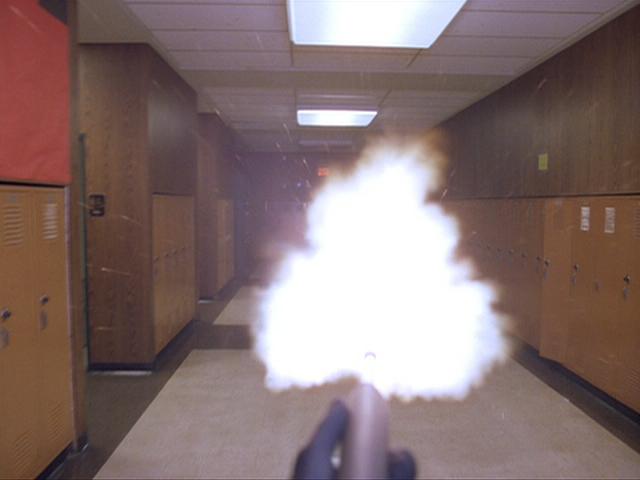
—-In a long defence of gun-owning, author William Vollmann reminds us that the link between violence and democracy is an ancient one. As he points out, back in the cradle of civilization, Athenian males qualified for citizenship by their possession of weapons. He writes:
We read in ancient Athens the franchise was bestowed only upon those men who had or could get the implements of war. We do not read that it was granted to trussed and defanged men whose virtue was that they could not harm the polity. [25]
For me, Vollmann’s belief that this justifies gun-ownership is fanciful, but we’ll let that be. Enough to take his point that, for the Greeks of Ancient Athens, to be armed was to be civic. In modern times, the second amendment to the American constitution serves the same ideological purpose – citizenship through arms – and this is why so many debates over guns actually double as debates over citizenship. However, the idea that one is entitled to independence and is guaranteed expression by control of a means of violence has a darker side, a side we see in school shootings. If the final guarantee of democracy is only a ubiquity of arms, a republic of equal lethality, ensuring one’s entitlement to speak can only mean using those arms when one is at one’s limit. As we all know, though, violence rarely restores balance; instead, it unleashes a perpetuating logic, kill and counterkill, escalating inexorably. And, in fact, to my mind, ownership of a gun is a sort of freedom daydream, a promise to yourself that you are among the free simply because, when worse comes to worst, you control the capacity to create death. Still, in the sense that this equation passes for common sense in America, we can see that there is nothing extraordinary about school shooters and their crimes. Falling back on guns is not aberrant; it’s classical. Bloodshed is free speech reduced to its origins, the definitive autonomising fiction.
—-For school shooters, the aim of their weapons is to allow them a voice. These kids are making a social statement, but a statement precisely about their inability to state things, an expression of their expressionlessness. This is why their intentions have been so hard to read: the meaning is meaning, a violent desire to mean and be meaningful. Unable to articulate themselves in small underground ways at the edges of their society, the gaze of the school shooter remains fixated on the empty centre of the school, the cool that they are involved in but of which they are not a part. School shooters become entrapped in what I will call a kind of agoramania, a frustration that reaches madness (which is to also say, pure rationality) at their breathing non-existence in the public space, the society, the school.
—-The problem with this is that the actual school shooting exposes it all as the useless enterprise it is. Like Disneyland, the violence never delivers on its promise. In a note read out by his father after his arrest, Mitchell Johnson had this to say to the families of the kids he shot:
Hi. My name is Mitchell. My thoughts and prayers are with those people who were killed, or shot, and their families. I am really sad inside about everything. My thoughts and prayers are with those kids that I go to school with. I really want people to know the real Mitchell someday.
I can’t help but have a deep sense of sympathy for these shooters – now either dead or locked away for life. The shooting was designed to be an act of self-definition and instead, it destroys all sense of self. The ‘real’ Mitchell is something Mitchell still wants everyone to know but it will never be known, especially to himself, no matter how much he ‘really wants’ it. His letter reminds me of a line from Blanchot:
We have destroyed him, we have freed the star – henceforth without radiance: dark he wheels, the star of disaster, vanished as he wished it, in the anonymous tomb of his renown. [26]
In his interview with the police after his shooting, Kip Kinkel also found himself relentlessly adrift, unable to explain his actions, outside of the fact that he had to act, saying to the interviewer over and over, “I had no other choice. I couldn’t do anything else”. The shooting seemed so necessary, and now it seemed nothing. In truth, of course, it was always both.

—-In a post that has been all about fantasy, let me end with fiction. In Dennis’ My Loose Thread, the character of Gilman – a somewhat absurd, sad and likeable kid – shoots up his school. Unlike Larry, our narrator in the novel, Gilman is far less self-reflexive about his problems and actions but that is precisely the point. While Larry spins out of control due to his inability to stop thinking about the fucked reality around and inside him, Gilman buries his own alienation in a number of performative personas: he brands himself a Nazi, he idolises the Columbine killers, he cloaks himself in political jargon. But all of these efforts to construct a ‘cool’ sense of self are little more than empty bravado. As Larry remarks, Gilman is not really scary to anyone, even will all his Nazi stylistics. Instead, “he just looks really thin and not German and not anything else he wants to be” (115). Likewise, Gilman’s constant need to justify himself – to offer a ‘rationale’ for every action, including his desire to shoot up the school – is oddly useless. Once more Larry sees through it, commenting on how Gilman uses the actual word ‘rationale’:
He likes that word. If you look at his website, it’s there about five thousand times. I don’t think he understands it. (39)
Here Gilman’s need for logic is undermined by the fact that he cannot even grasp the dimensions of the very words he uses. ‘Rationale’ becomes a mantra rather than an explanation, an incantatory chant. For this reason, Gilman’s attempts to make something of himself, to be recognised and reconfirmed, fall down as surely as Larry’s do. To be sure, even his plans to shoot up the school in a blaze of glory prove to be barren. Showing Larry the hit list of random names he and his friends drew up, Gilman himself recognises the worthlessness of his project: “It was just people we didn’t know. It was pathetic.” (115) Thus, the school shooting emerges for Gilman not as a moment of victory but for the decption it always was, yet another dead-end dream. In fact, the only reason he goes ahead with it at all is because he has nothing left anyway. Coming to school with his gun, Gilman’s final moments are no more than a bland, skeletal violence aimed at nothing greater than seeing if it matters who dies. Watching this, Larry realises that this ineffective last attempt coincides with his own experiences:
Eventually the shooting just ends. Maybe when he started to care who was dead, he realized he could die. Or he finally figured out what he wanted to do, and either did it or knew that he couldn’t. Maybe the last shot was aimed at himself. It sounded like all the others. (121)
In essence, the purpose of killing for school shooters is ultimately about purpose itself, the need to simply be, in one way or another. If these kids are so desperate to be ‘cool’, behind that is a more basic, desperate desire just to be worth something, anything, it doesn’t matter what. In such a situation, the shooter is as much a victim as those he shoots, just another indistinguishable shot in a string of gunfire. It is no accident, then, that the Columbine killers simply stopped mid-massacre. Why bother going on when you’re finally in the thick of it, and it’s not worth anything at all? The carnage, the kills, the corpses: this was what they dreamt of but it was nothing like they’d hoped for. The real tragedy of school shootings, in the end, is just this. The futility for all involved.

[2] Psychiatrist Robert Shaw writes: “We can identify somewhat with crimes of rage; on some level we can imagine people becoming greedy or desperate enough to rob a bank or embezzle from their companies. But we cannot connect with senseless slaughter; the mind of the high school shooter is beyond our comprehension.” Robert Shaw, The Epidemic: The Rot of American Culture, Absentee and Permissive Parenting, and the Resultant Plague of Joyless, Selfish Children, ReganBooks, New York, 2003, 3. This book is about as bad as it sounds, and basically, this whole post is aimed at arguing against it.
[3] Howard F. Stein, ‘Disposable Youth: The 1999 Columbine High School Massacre as American Metaphor’, Journal for the Psychoanalysis of Culture and Society, 5.2, Fall 2000, 217.
[4] Mark Seltzer, Serial Killers: Death and Life in America’s Wound Culture, Routledge, New York and London, 1998, 43-5.
[5] A possible exception is the case of Barry Loukaitis would shoot his algebra teacher first before turning on two other students (randomly) and holding the rest hostage. However, his stated ‘intention’ in bringing a gun to school was to shoot a boy that had teased him. The teacher, then, was ‘collateral damage’, if I can use a disgusting term ironically, a body derivative to the crime.
[6] Julie A. Webber, Failure to Hold: The Politics of School Violence, Rowman & Littlefield Publishers Inc., Lanham, Boulder, New York & Oxford, 2003, 8.
[7] Katherine S. Newman, Rampage: The Social Roots of School Shootings, Basic Books, New York, 2004, 50.
[8] Georges Bataille, ‘The Sacred Conspiracy’, Visions of Excess: Selected Writings, 1927-1939, University of Minnesota Press, Minneapolis, 181.
[9] On the guns angle. I am aware this is a divisive point, as well as a well-rehearsed one, and so have largely avoided it in this discussion. To make clear my own position, I agree wholeheartedly with JW Veldhoen’s point on here that “there is a cult of the gun, a death-cult, and like I said, I think it is dead-sexy (and simultaneously boring, like watching sex)” and Dennis’ response that “every weapon has its own appeal to those who use them as well their own tempos and levels of related contemplation”. However, while the gun no doubt enhances the appeal and provides the means (school shooters rarely just ‘grab a gun’, they accrue an arsenal), I don’t believe they account exclusively for the motivations. There is a logic behind selecting guns over all other weapons, as I shall discuss later, but this is not a motive as such; rather, gun use is more an outcome of the shooters’ situation and a systemic element to the crime. My basic problem with, say, Michael Moore’s Bowling for Columbine adheres around this point. That film (entertaining, certainly, but wholly incoherent in its arguments) seems to propose that the urge to violence almost magnetically leaps from the ubiquity of weaponry, almost like alchemy; if they’re there, do it; the possibility and the perpetration are one. An obvious cure for school shootings is to restrict access to guns (no guns, no shootings) but what I’m more interested in here is accounting for why they have happened in the past, rather than how to stop them in the future. In the end, the guns must go, but I believe the logic that led to their use will not be assuaged by their absence, as that logic extends beyond them.
[10] Webber, Failure to Hold, 18.
[11] Edward Ingebretsen, At Stake: Monsters and the Rhetoric of Fear in Public Culture, The University of Chicago Press, Chicago and London, 2001, 6 & 8.
[12] Paul Ricoeur, Memory, History, Forgetting, The University of Chicago Press, Chicago and London, 2004, 83.
[14] Newman, Rampage, 26.
[15] Jean Baudrillard, Simulacra and Simulation, The University of Michigan Press, Ann Arbor, 1994, 13.
[16] Erving Goffman, Stigma: Notes on the Management of Spoiled Identity, Touchstone, New York, 1986.
[17] Blanchot, The Writing of a Disaster, 2.
[18] Paul de Man, The Rhetoric of Romanticism, Columbia University Press, New York, 1984, 81.
[19] Murray Milner Jr., Freaks, Geeks and Cool Kids: American Teenagers, Schools and the Culture of Consumption, Routledge, London and New York, 2006.
[20] Newman, Rampage, 81.
[21] Dennis Cooper, My Loose Thread, Canongate, Edinburgh, 2002, 17.
[22] Milner, Freaks, Geeks and Cool Kids, 60.
[23] Carl Roebuck, The World of Ancient Times, Charles Scribner’s Sons, New York, 1966, 215.
[24] Slavoj Zizek, Welcome to the Desert of the Real: Five Essays on September 11 and Related Dates, Verso, London and New York, 2002, 112.
[25] William T. Vollmann, Rising Up and Rising Down: Some Thoughts on Violence, Freedom and Urgent Means, Ecco, New York, 2003, 55.
[26] Blanchot, Writing of the Disaster, 45.
—-
*
p.s. Hey. ** Dominick, Hi!!! I’m actually very weak on manga. I’ve read very few, for no good reason at all other than maybe it seems like a huge undertaking to get into the vast array of what’s out there. But maybe my little browsing trip will break the dam. I did used to read a fair number of yaoi’s, but not for ages. I guess like you. If I find anything really compelling I’ll definitely pass the title along. I just need to warn love that my waste is really not superior, ha ha. Although, uh, how would I know, I guess? luxuryservice is a very solid pick. I’d be hard pressed to choose just one this month. Love ordering my mind to leave me alone, G. ** Misanthrope, Hi. Oh, that’s sad about Luke Halpin. Are you in some kind of ‘Flipper’ group or something? Some of my favorite singers can’t sing. Like Elias Ronnenfelt of Ice Age used to not be able to sing, and I loved his vocals so much, and now he’s figured out how to sing, and it’s such a let down. ‘Wonka’ is one of those movies you couldn’t pay me enough money to see. But … how was it? My weekend has grim stamped all over it, but nothing’s ever set in stone. ** Nick Toti, Ah, gotcha. They do seem addicted to playing live no matter what the circumstance. So wish you could’ve filmed them for selfish reasons if not for ideally cinematic ones. ** _Black_Acrylic, Hi. Oh, shit, I’m glad you’re though that, and ouch, and your verbiage is definitely on the mend and even mended to my eye. I’ll hit the playlist, of course! Everyone, _Black_Acrylic aka Ben ‘Jack Your Body’ Robinson is one hell of a great DJ, as some you must already know, and he has uploaded an old playlist from 2011 re: the late, much missed zine Yuck ‘n Yum that he co-edited, which he characterises as a ‘kind of a Dundee Sunday afternoon “chillout” mix’, and I will suggest to you that your weekend might just exceed all expectations if you add his auditory curation to it. Here. ** Steve Erickson, That does stink. Just hoping this weekend marks the end of the blah. I’m not sure, but it’s very possible I was at those Cheap Trick shows as I saw them at the Whisky more than once that year. No, I’ve never talked to Zander or Nielsen. I’ve always, always wanted to. I tried to get Spin to let me do a big feature on them back when I was the masthead, but CT were in an ‘uncool’ phase at that point, and the magazine wouldn’t have it. Everyone, Steve has reviewed the Korean sci-fi disaster film CONCRETE UTOPIA here. That was the spitting image of an early Swans lyric, you’re right! ** Corey Heiferman, I’m happy that you, like I, took pleasure in parsing that particular sentence. Nice, nice, nice: your house party. I’m the worst person to ask for input because I hate parties. I think I’ve only hosted maybe two in my entire life, and I’ve been known to fake being sick to get out of going to them. Make sure there’s an easily accessible place to go smoke cigarettes? Either invite a carefully curated handful of people or a massive number of people? Sadly, I’m the last person to ask. You sound like you’ve got it sorted though, honestly. ** NLK, Hey! Great to see you! Thanks about the film tidbits. I’m pretty positive it’ll play in France next year, but how I don’t know yet. We’ll probably do a screening first, and I can alert/invite you to that if you remind me. Like I said, I’m weak on graphic novels too. Well, actually, an acquaintance of mine, Sylvain Bordesoules, who also does the story boarding of Zac’s and my films, has a recent graphic novel out called ‘L’été de charognes’ from Gallimard that I haven’t read yet but that everyone speaks very highly of. I hope Gisele’s piece is good and that you like it. Thanks a lot for coming in. Don’t be a stranger unless that suits you. ** Nasir, Hi. Good on both ends. Granted, I’ve never even remotely come close to working on big machinery in a factory, and maybe that’s why the idea that you’re doing that excites me. I’m a weirdo because I’ve never had a real job. I’ve always tried to get by doing journalism or freelance things so I could put everything into my writing. This is a faulty comparison, but actually doing this blog is closest to a kind a job, albeit unpaid, I’ve ever had in terms of the time and energy commitment. And it took me quite a while to figure out how to do the blog the way I like to do it and also work on my fiction at the same time. I did figure it out, but I’m not even sure how I did. I guess just by compartmentalising, organising my brain or whatever to put blog making in one section and writing in another and just making sure the blog work didn’t eat into my writing time or something. But there’s no physical involvement in making the blog, and I don’t know what I would do if I was physically tired and mentally burnt out from doing it. Sorry, that’s not much help. Just making your writing the absolute priority somehow is the key, I guess, even though that’s a very general thing to say, I know. I hope you can. ** Right. I’ve decided to restore this very old but brilliant post by a veteran blog commenter/ member Slatted_Light who’s better known to the world at large as the writer/thinker David Rylance. It’s an amazing piece of work, and I hope you’ll tend to it this weekend and enjoy yourselves in some fashion. See you on Monday.
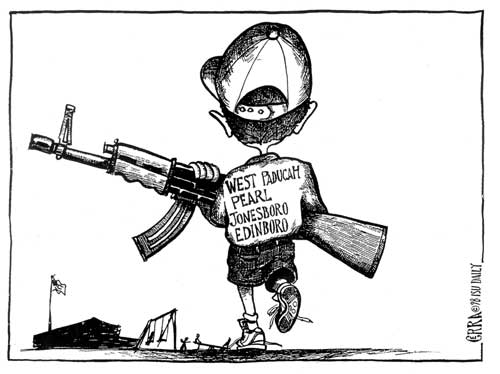






 Now available in North America
Now available in North America 
Hey
God there was something on yesterdays slave list that sort of upset me.
It’s like why do people go out there way to misgender trans people? I wonder how often trans escorts go through that. Have u ever seen like any escorts that may have said something that kind of made u feel bad for them? Or disturbed.
Anyways! Hey!! Ok I totally saw something yesterday at Spencer’s that I got you it is small and cheap with my discount so you are chill buddy.
MUAHAHA. You are gonna LOVE him! You have opened Pandora’s box by allowing me to send it😈! (You will like it tho)
It’s a little slave bear with a chain on his neck and I was gonna get you the one with a gag in his mouth but tbh i like this one.
https://www.google.com/search?client=ms-android-boostdish-us-revc&sca_esv=e8fbdd2c2949ed4a&sxsrf=AM9HkKkzgDUwWJtqhJiw3-k-jJ_JLGbA4w:1702736600188&q=master+series+bears&tbm=isch&source=lnms&prmd=ivsnbmhtz&sa=X&ved=2ahUKEwihz8yRlJSDAxXxSDABHUMCAe0Q0pQJegQIChAB
Idk if this sent but if it did then I hope he lingers in your head all day.
I’m thinking how I should package the drawing because it’s on a thin sheet and idk if maybe there’s some sort of thin envelope.
Where will you put it? I’ll figure it out.
Hey if your a fan of amusement parks are you a fan of the disturbing deaths and accidents behind them?
I’m feeling very devious and cunning today Muhahaha.
you?
Also would you totally be open to the idea of dedicating a blog post to Jeff Magnum aka NMH?
What is interesting about school shootings is that they are mostly shooting fellow students. I hated Junior High School, but that is because of the teachers, especially the P.E. Teachers. I would never harm or even have a fantasy of killing my fellow students, even if I hated some of them. But P.E. Teachers? Oh yes, they are genuinely evil. For some reason, I was never bullied by a peer or fellow student. P.E. Teachers, on the other hand, were pure terrorists and extreme bullies. So yes, it is hard for me to wrap my head around why a dude or two want to shoot up a classroom with students. Even in my favorite school film, “If,…”, they only shot up the authority figures.
hi dennis! decided to commit to the whole ‘actually commenting here’ thing.
have always had a bit of a fascination with mass shooters. i used to know a guy who’d tell me all about how he wanted to shoot up his school (never did, thank god for the UK’s gun laws) & the details of his hit list (which i ended up making my way to the top of). i guess ever since that fiasco i’ve wanted to figure out what was going on in his head, what made him get to that point.
one of my hobbies is game development, and earlier this year i got really into RPGmaker. there’s this one game, morimiya middle school shooting, which some people think is some kind of commentary on mass shootings or gun violence, but i’m pretty sure it’s a gore fetish game.
in terms of my history with cheap trick, i found them in a super weird & roundabout way! i was looking for stuff on the street fighter 2 ost & saw the song mighty wings mentioned somewhere. i’ve still never watched either of the top gun movies though. i’m depressingly basic so my favourite song by them would probably be dream police (the part at around 1:50 just scratches my brain). i guess i just really like songs about paranoia? i’m also obsessed with the songs ‘controller’ by oingo boingo and ‘destroyer’ by the kinks.
Hi Dennis. Long time no see! Again I’m sorry I haven’t talked in quite a bit, but I’m going to try to return to these posts as much as I can. Very grim post. My school was almost victim to a possible shooting. How are you feeling? Has there been anything interesting happening lately? Me? I’m going to play a D&D session with my boyfriend and friends tonight. Might watch a movie. Had insomnia earlier so I watched Peter Strickland’s Berberian Sound Studio. Pretty good film imo. Have a good one, Dennis!
Wow, that would be great, I’d love to come to something like that. ‘L’été de charognes’ looks promising, I’ll have to check it out. It’s funny how a lot of bookstores organize by publisher here, I wonder if that sort of thinking puts more pressure on houses to maintain high standards across the board in what they put out.
Extra Life was great, she’s doing some really cool things with lighting and pacing. I’m from somewhere without much in the way of theater so just the experience of actors & lasers & dancing & a marionette & painterly mise en scene 10 feet in front of my face was kind of mind blowing by itself. I love feeling dumb like a kid again that way. The whole theater was blasted with fog basically from beginning to end and, maybe it was just because of cold season, but there wound up being a constant soundtrack of coughs from the audience that was kind of perfect too.
Did you go to any of the Bresson screenings that formed a mini festival a few months ago? I only made it to L’argent but I’m glad I did because the main actor from the film came and answered questions afterwards. The Q&A was interesting but the experience of seeing a person in a Bresson movie and then seconds later seeing them completely deBressonified was magical. I’ve never thought about how cool it would be to be one of his models and get your essence extracted and purified like that—and then you just go on and live your life as an architect in the provinces (like he did) while your soul stays stamped on film forever.
This post> People can be pretty cavalier about suffering and I don’t think dead kids are toyz, but taking a moment reading this- just submerging and resurfacing- my mind is firing, firing up so bad it’s gorgeous. Much here is so fucking lucid and I’ve only just had a bit of it; will do a complete read as soon as my shift is over- probably tomorrow (Monday). Isn’t it the best when something you didn’t want to like turns out to be totally amazing? I’d love to talk to you about some of what Rylance pieced together (like Disney as a “deterrence mechanism”, not just some kakedasu Battle Royale kindof entertainment but a cultural trick of the deepest, most nefarious and ravenous kind/?!!). Everything is a deterrence mechanism, really. I don’t think we ever step free. Maybe in art. Definitely in art. For those shooters/ school is the machine/ it’s the world and you’re in it and everyone hates you or doesn’t even know you exist- you could be burning alive and you’re just nothing and still all that energy in you is propelling you forward to- Nothing// It feels like that now, probably for most people even. For me, it feels like everyone around me is a projection, like the Rapture’s actually occurred and everyone’s gone but their shells are still talking at me doing things to me, etc. Now and then I think there’s some blood in one of them but everyone’s so terrified of contact they’ll startle and skitter away like frightened animals back into an electronic haze of never-was-there-at-all// There’s just no place for love to go, much less rage or sadness> anything- nothing- nowhere. Anyway, sorry- I’m so not down right now at all – just being honest. ANd that was such a great post- really, thanks for re-posting it- Yea, and I hope your ‘grim’ weekend (that sucks, man) wasn’t grim at all. Did you have any good parambulations-du-flaneur- heh my attempt: good wanderings? I mean, you are in Paris and you’ve made a movie that you’re proud of and you have friends and lots of people love you- not so bad really? Stay good.-
Hi!!
Thank you so much for reviving this brilliant post! I finally had enough time to read it, and I might not stop – what a gift to have a reference list as well! I think we’ve already talked about this once, but I can’t remember what was said: have you read the book Dylan Klebold’s mother wrote about Dylan and, more broadly, school shooting? Among other things, it has a “notes” section I found worthy of exploration.
Looks like we’re in a pretty similar situation when it comes to manga. I’ve only ever really been interested in YAOI, so I barely know anything else – a couple of big ones, like “Death Note” and “Elfen Lied,” but that’s about it. I hope you’ll find a few intriguing ones!
I’d say love knows what he’s getting into, so no worries, haha.
Love could definitely order my mind to leave me alone sometimes, too… Are you consumed by film-related worries? Love putting me in a social mood because we’ll spend the evening with one of Anita’s friends, Od.
@ Slatted_Light, thank you for this amazing post!
I would like to see GVS’s Elephant film again, which struck me as a worthy attempt to tackle the same subject.
When you were researching MY LOOSE THREAD, did you browse the “Columbiners” on Tumblr? I suspect the site has scrubbed them a bit, but a decade ago, the Harris/Klebold fandom was very visible there.
New York got hit by a storm – we’re supposed to get 50 mph winds starting at midnight and continuing into Monday morning!
Cheap Trick are still releasing new albums, and they’re finding a small but steady audience. If you wrote about music today, I’m sure someone would be interested in a piece about them.
I feel much better, although not quite back to normal. I’ve barely left my apartment since I got sick, and that’s taken its toll mentally and physically.
I’m in the middle of watching SAW X. It’s better than I expected. Making con artists ripping off terminal cancer patients the subject of vengeance and torture fantasies makes them much more palatable!
Dennis, Booo! on the grim. Whose house do I have to come over there and burn down? Just let me know. 😉
Oh, well, these kids really sucked and not in the good way. (Oops, that was improper.) Just really bad and not fun.
Wonka was what you’d expect it to be. Wasn’t great, wasn’t awful. A kids’ movie. Timothee was good, but he’s good in everything. The musical numbers—and it is 100% a musical—were okay but not memorable. Just silly and whimsical. I’ve spent worse time. And better time. Haha. I won’t be seeing it again.
Oh, and Willy spends half the movie drugging people. I don’t think anybody realizes he’s a roofie king.
Yeah, I just happened to look Luke Halpin up a while ago. Something made me think of him and I was like, hmm, wonder what he’s up to. Well, not much. And it is sad. He was a good guy. Got into protecting animals and stuff and worked in that field all his life.
Ugh, I got to go into the office for that laptop again tomorrow. Hope that fucker shows up this time. And of course it’ll be raining on the way in. Bleh.
Classic. OK, so the voices told me he owned me on the Jim Goad thing I posted years ago. They said it wasn’t actually JG, and SL was like “his book is 2/3rds good.” I mean, they said JG didn’t write it, and SL owned me. Maybe. Maybe I was being stupid.
“JG didn’t write it” I mean the article I posted.
I feel like posting this is partly an attempt to make him come back and comment, so yeah, he owned me. I didn’t know what the fuck I was talking about. Sigils sigils sigils, come back SL.
I remember being very worried about school shootings in 1998, the year I graduated high school, even though this was pre-Columbine and weren’t quite as much all over the news as they eventually became. There were a lot of rumors that these fellow senior twin brothers (neither of whom would be graduating that year for various reasons) were planning on doing some kind of shooting on graduation day: the ceremony was to have taken place at some local football field and the way we heard it was supposed to go down was that they’d be using sniper rifles. When it rained the day of the event, and the ceremony took place at the school instead, I felt a bit of relief, but I couldn’t enjoy the actual event because I still worried about something happening, even though nothing did. My mentality at the time was that if I could just get to college I’d be safe, that the odds of a shooting at college were less likely (though the mass shooting at Virginia Tech in 2007 put a lie to that). At the very least, I knew the college I was going to had a lot of buildings, and would thus be harder for a lone gunman to be everywhere at once.
Hey Dennis, I saw you at the Neo-Decadent Zoom meeting yesterday! What did you think of it?
I could have gone to the Neo-Decadent Zoom, but I was like “nobody wants me there,” lol.
The voices were like “say wants, not need.”
“Unable to negotiate the language of cool, bullets substitute for words, offer a means of articulation. To be unable to speak — this is the school shooters’ chief agony and chief rationalisation. And so in their dream, the cool one, violence is not senseless, as is so often said. No, it means everything in the world.”
Cool, yeah I’m not cool.
I used to wish I was “cool”, now, not so much.
” Far from some sentimentalised space of equal exchange, transparent relations and universal self enhancement, schools are coterminous with the society that surrounds them — characterised by confusion, alienation, secrecy and mixed experiences.”
Great. Reading this from the bottom up, lol.
Read the whole thing. I dig it.
I am not cool. Wished I was years ago, but the voices broke me down.